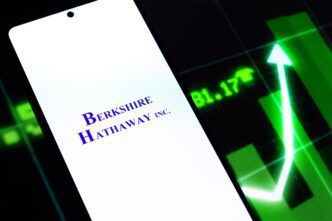In an age of overwhelming choice, the minimalist ethos of living with less has extended into personal finance, creating a demand for tools that simplify rather than complicate. For the modern minimalist, the goal is to reduce financial clutter, automate wealth-building, and minimize decision fatigue. The best Financial Technology (FinTech) tools achieve this by consolidating accounts, automating savings and investments, and providing a clear, uncluttered view of one’s financial life, effectively allowing users to manage their money with intention and then get on with living. These platforms replace the tangled web of traditional banking, brokerage, and budgeting spreadsheets with streamlined, all-in-one digital solutions that put financial wellness on autopilot.
What is Financial Minimalism?
Financial minimalism is not about austerity or deprivation; it is the intentional application of minimalist principles to your financial life. It’s about understanding what you truly value and aligning your spending and saving habits to support that vision, while eliminating everything else that creates stress, distraction, or waste.
The core philosophy revolves around a few key ideas. First is the reduction of complexity. This means having fewer accounts, fewer credit cards, and fewer financial products to manage. The mental energy saved from juggling multiple logins, statements, and due dates is redirected toward more meaningful pursuits.
Second is the focus on automation. A financial minimalist understands that willpower is a finite resource. By automating savings contributions, investments, and bill payments, they build wealth consistently without relying on daily discipline. This “set it and forget it” approach ensures progress toward long-term goals occurs quietly in the background.
Finally, it emphasizes clarity and control. Minimalists seek a transparent, holistic view of their finances. They want to know their net worth, track their cash flow, and understand their financial trajectory at a glance, free from the noise of confusing interfaces and aggressive upselling.
The Minimalist’s Dilemma: How FinTech Can Help (or Hurt)
The explosion of FinTech presents a paradox for the aspiring minimalist. On one hand, there is an app for every conceivable financial task, from rounding up spare change to tracking carbon footprints. This promises unprecedented control and efficiency.
On the other hand, this very abundance can lead to “app fatigue” and digital clutter. Subscribing to a dozen different financial apps defeats the purpose of simplification. You might end up with one app for budgeting, another for investing, a third for high-yield savings, and a fourth for tracking bills, creating the very complexity you sought to escape.
The key is to be highly selective. A minimalist approach to FinTech involves choosing a small, curated set of tools that consolidate functions and automate processes. The ideal tool doesn’t just add a new feature; it replaces multiple old systems, streamlining your financial world into a single, elegant interface.
Core Principles for Selecting Minimalist FinTech Tools
When evaluating a FinTech tool, a minimalist should filter it through a specific set of criteria. The goal is to find platforms that embody simplicity, efficiency, and transparency.
Consolidation: The Power of One
The most valuable FinTech tools for a minimalist are those that perform multiple jobs well. Look for platforms that integrate checking, savings, investing, and even loan management into a single application. This “all-in-one” approach provides a unified financial dashboard, eliminating the need to switch between different providers to see the full picture.
Automation: Reducing Decision Fatigue
Human behavior is flawed, but systems can be perfect. The best minimalist tools leverage automation to enforce good financial habits. This includes automatic transfers to savings on payday, recurring investments into a diversified portfolio, and automated bill payments. Automation removes the friction and emotional biases that often derail financial plans.
Simplicity and User Experience (UX)
A minimalist tool must have a minimalist interface. The user experience should be clean, intuitive, and focused on essential information. Avoid apps cluttered with advertisements, excessive notifications, or a labyrinth of menus. The platform should empower you with data, not overwhelm you with it.
Transparency and Low Fees
Hidden fees are the enemy of financial efficiency. Minimalists value transparency and seek out platforms with clear, straightforward pricing. Low-cost or zero-fee models are preferred, as they ensure more of your money is working for you, not for the financial institution.
Top FinTech Categories and Tools for the Minimalist
Applying these principles, we can identify standout tools across key financial categories that are particularly well-suited for a minimalist lifestyle.
1. All-in-One Banking and Money Management
The foundation of a minimalist financial setup is a single, powerful hub for day-to-day money management. Neobanks and modern financial platforms excel at this by combining high-yield savings, checking, and other services into one seamless experience.
A prime example is SoFi. It offers checking and savings accounts with a competitive APY, automated savings features, an integrated investment platform, and access to loans, all within one app. For a minimalist, SoFi can replace a traditional bank, a separate brokerage, and a savings account provider, dramatically simplifying their financial footprint.
Another strong contender is Revolut. While known for its international currency exchange features, its core product offers robust budgeting tools, automated savings “Vaults” for specific goals, and a clear overview of spending habits. It consolidates global and domestic finance management effectively.
2. Simplified Budgeting and Expense Tracking
For a minimalist, budgeting is not about restrictive penny-pinching but about intentional spending. The right tool makes this process effortless by automatically categorizing transactions and providing a clear view of where money is going.
While many all-in-one banks have built-in budgeting, some prefer a dedicated tool. YNAB (You Need A Budget) is a favorite for its proactive philosophy. Instead of just tracking past spending, it forces you to “give every dollar a job,” aligning your money with your priorities. This intentional approach resonates deeply with minimalist principles, reducing financial anxiety by creating a clear plan.
For those who prefer a more passive overview, Monarch Money is an excellent modern alternative to now-defunct services like Mint. It provides a beautiful, comprehensive dashboard of all your accounts, tracks your net worth over time, and helps you monitor cash flow and financial goals without requiring the hands-on management of YNAB.
3. Automated and Passive Investing
Minimalist investing is about playing the long game. It avoids the stress and complexity of active trading in favor of passive, diversified, low-cost strategies. Robo-advisors are the perfect FinTech embodiment of this philosophy.
Platforms like Wealthfront and Betterment are leaders in this space. You simply answer a questionnaire to determine your risk tolerance, and the platform automatically builds and manages a globally diversified portfolio of low-cost exchange-traded funds (ETFs). They handle rebalancing and tax-loss harvesting automatically, making it a true “set it and forget it” solution for building long-term wealth.
For those just starting, Acorns offers an even simpler entry point. Its signature “Round-Ups” feature automatically invests your spare change from everyday purchases. This automates the habit of investing without requiring large, lump-sum commitments, making it an effortless way to start building a portfolio.
Building Your Minimalist FinTech Stack
The goal is not to collect a long list of “best-in-class” apps but to build the leanest possible “stack” that meets your needs. For many, this could be as simple as two or three core applications.
A powerful minimalist stack might consist of an all-in-one platform like SoFi for banking, saving, and bill pay, combined with a dedicated robo-advisor like Wealthfront for serious, long-term investing. This two-app system covers nearly all personal finance needs with maximum automation and consolidation.
If your spending habits require more granular control, you might add a third tool like YNAB. However, the key is to constantly evaluate: does this tool add more value than the complexity it introduces? If the answer is no, it doesn’t belong in your stack.
The Future of Minimalist Finance
The trend in FinTech is moving toward even greater consolidation. The rise of the “super app”—a single platform that aims to handle every aspect of a consumer’s financial life—is on the horizon. For minimalists, this could represent the ultimate endgame: one app to rule them all.
However, this future also brings new considerations, including data privacy and the risks of a financial monoculture. As artificial intelligence becomes more integrated, financial guidance will become hyper-personalized and even more automated, further reducing the mental load on the individual.
Ultimately, FinTech is a powerful enabler for the financial minimalist, but only when wielded with intention. The objective isn’t to find the most feature-rich tools, but to select the fewest, most effective platforms that provide clarity, automate good habits, and then fade into the background. By thoughtfully curating a simple digital toolkit, you can build a robust financial life that supports your values, freeing up your most precious resources—time and attention—to focus on what truly matters.







